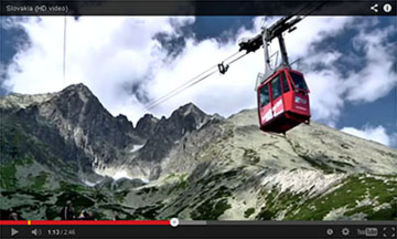The Capital of the Slovak Republic BRATISLAVA, also referred to as the Beauty on the Danube can not only boast interesting history but it also is the centre of the most dynamically developing region of central Europe at present.
HISTORY
This strategically important place has often played a big role in the history of central Europe. The date of December 2nd 1291 is not the date of birth of Pressburg. One should take it rather as the date of its school leaving certificate, which confirms the aptness of its inhabitants to become the free citizens of a royal borough. In the 14th and 15th centuries Bratislava lived the period of rapid development in trade. The opening of the Academia Istropolitana (1467) has strengthened importance of Bratislava as the cultural and educational centre of the then Kingdom of Hungary. After Turks penetrated deeper into the Kingdom, Bratislava was established the Capital of the Kingdom of Hungary, the seat of the Hungarian Diet, central administration and the coronation town of the Hungarian Kings and Queens. Eleven Kings and eight royal wives were crowned in Bratislava in the years between 1563 and 1830.The counter-Turk wars and the Rebellions of Estates
in the 16th and 17th centuries have interrupted the development of
towns. In the 18th century and above all during the reign of Queen Maria Theresa
the significance of Bratislava increased again. Great amount of
wonderful palaces and buildings still survive from that period. The city
became the centre of cultural in the 19th century and Bratislava was
the cradle of the Slovak national emancipation. The
revolutionary events, workers movement and the First World Ward have
stigmatized Bratislava which, nevertheless, became the centre of the
political, economic and cultural life of Slovaks after 1918.
Bratislava now is the modern city and the seat of most important
political, economic, social and scientific bodies and institutions.
MONUMENTS
One of the city dominants which can be seen from far distance is The Castle of Bratislava. The most attractive part of Bratislava is the Old Town
where the most historical sights as well as cultural institutions are
concentrated. Its tiny lanes offer an ideal atmosphere for romantic
walks to those who love to follow signs of history in the middle of
modern world.
The significant structures in the historic centre of the city are all parts of the Monument Town Reserve.
GUIDED TOURS AND EXCURSIONS
Bratislava tourist information office offers a big variety of tours and excursions.

















